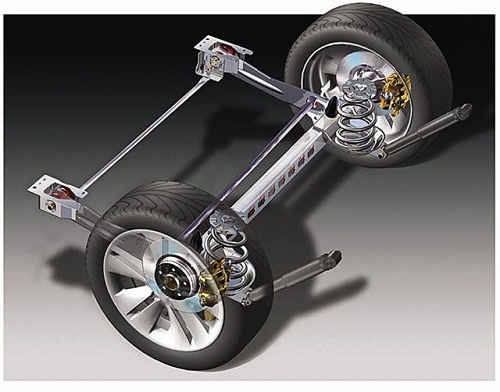
Rolling through… generations
Content
As you know, most of the popular car models produced today are front-wheel drive. Thus, making such a decision should lead to the use of a sufficiently durable bearing assembly for the mating wheels. Due to the large forces acting on the wheels during movement, the so-called double-row angular contact ball bearings arise. Currently, their third generation is already installed in cars, regardless of the size and purpose of this car model.
In the beginning there were bumps...
Not all car enthusiasts know that steel ball bearings were not the first to be used in cars, before the advent of front-wheel drive cars, a much less functional type of tapered roller bearings dominated. Despite the simplicity of its design, it had a number of significant drawbacks. The main disadvantage and serious inconvenience of tapered roller bearings was the need for periodic adjustment of their axial clearance and lubrication. These shortcomings no longer exist in modern angular contact ball bearings. In addition to being virtually maintenance-free, they are also much more durable than conical ones.
Button or (full) connection
The third generation of double-row angular contact ball bearings can be found in cars produced today. Compared to the former, they are more technologically advanced, and above all, their work is based on a different technical solution associated with their assembly. So how do these generations differ from each other? The simplest double row angular contact ball bearings of the first generation are installed on the so-called "Push" into the crossover seat. In turn, more advanced second-generation bearings are distinguished by their integration with the wheel hub. In the most technologically advanced third generation, double-row angular contact ball bearings function in an inseparable connection between the hub and the steering knuckle. First generation bearings can be found mainly in older car models, incl. Opel Kadett and Astra I, the second, for example, in the Nissan Primera. In turn, the third generation of double-row angular contact ball bearings can be found - which, perhaps, will surprise many - in the small Fiat Panda and in the Ford Mondeo.
Pitting, but not only
According to experts, double-row angular contact ball bearings are very durable: suffice it to say that from a technological point of view, they should last up to 15 years of operation. This is a lot, but, unfortunately, in most cases only in theory. Why practice shows otherwise? Among other things, the service life of wheel bearings is reduced. progressive surface wear of the material from which they were made. In professional language, this condition is called pitting. Double row angular contact ball bearings also do not contribute to the ingress of various kinds of contaminants. This affects progressive damage to the wheel hub seal. In turn, a prolonged squeak of the front wheels may indicate that the bearing is affected by corrosion, which, moreover, has penetrated deep into its insides. Another sign of one of the bearings not working properly is the vibration of the wheel, which is then transmitted to the entire steering system of the car. We can easily check what was damaged. To do this, raise the car on a lift and then move the front wheels in the transverse direction and parallel to their axis of rotation.
Replacement, that is, squeeze or unscrew
A damaged bearing, no matter what generation it is, can be replaced relatively easily. In the case of older solution types, e.g. first generation, the damaged bearing is replaced and installed in good condition by pressing it with a manual hydraulic press. It is even easier to do this in the case of bearings of the latter type, i.e. third generation. To make the correct replacement, simply unscrew and then tighten a few screws. Please note, however, do not forget to tighten them to the correct torque using a torque wrench.
